Quantum Explorer
The Digital Twin Standard for Autonomous Systems.
Made Interactive.
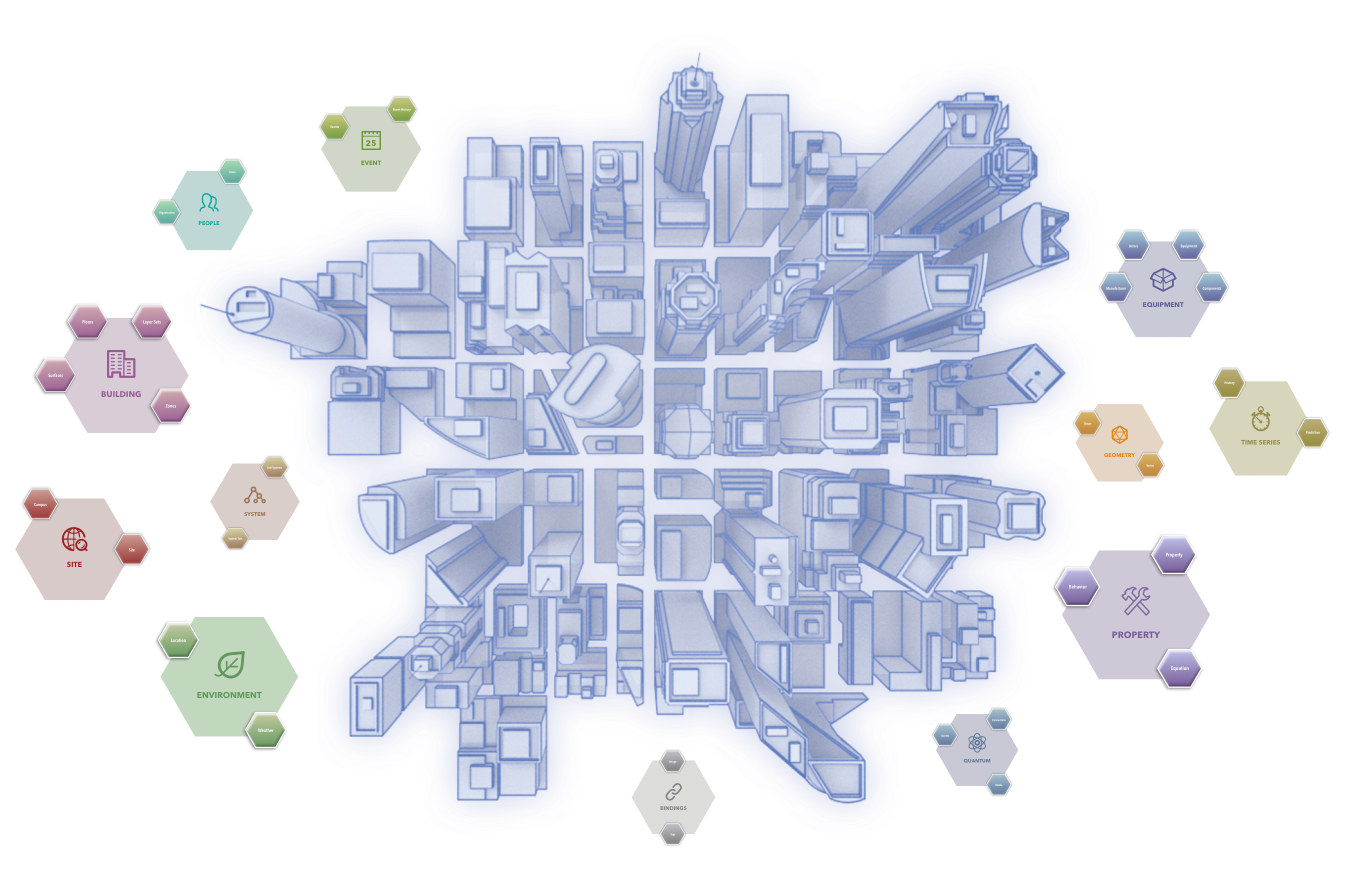
Quantum Explorer is a software tool for discovering the ontology structure, elements, and relationships in the Quantum.
Learn, Navigate, Query.
Dive Into Quantum.
Physics-based autonomy requires a lot of data. It also requires that data to be structured. That is, the relationships between the data need to be clear and documented. Quantum is a sophisticated, physics-based digital twin standard that organizes and describes objects (and their datasets) in an ontology with enough granularity to enable autonomous systems.
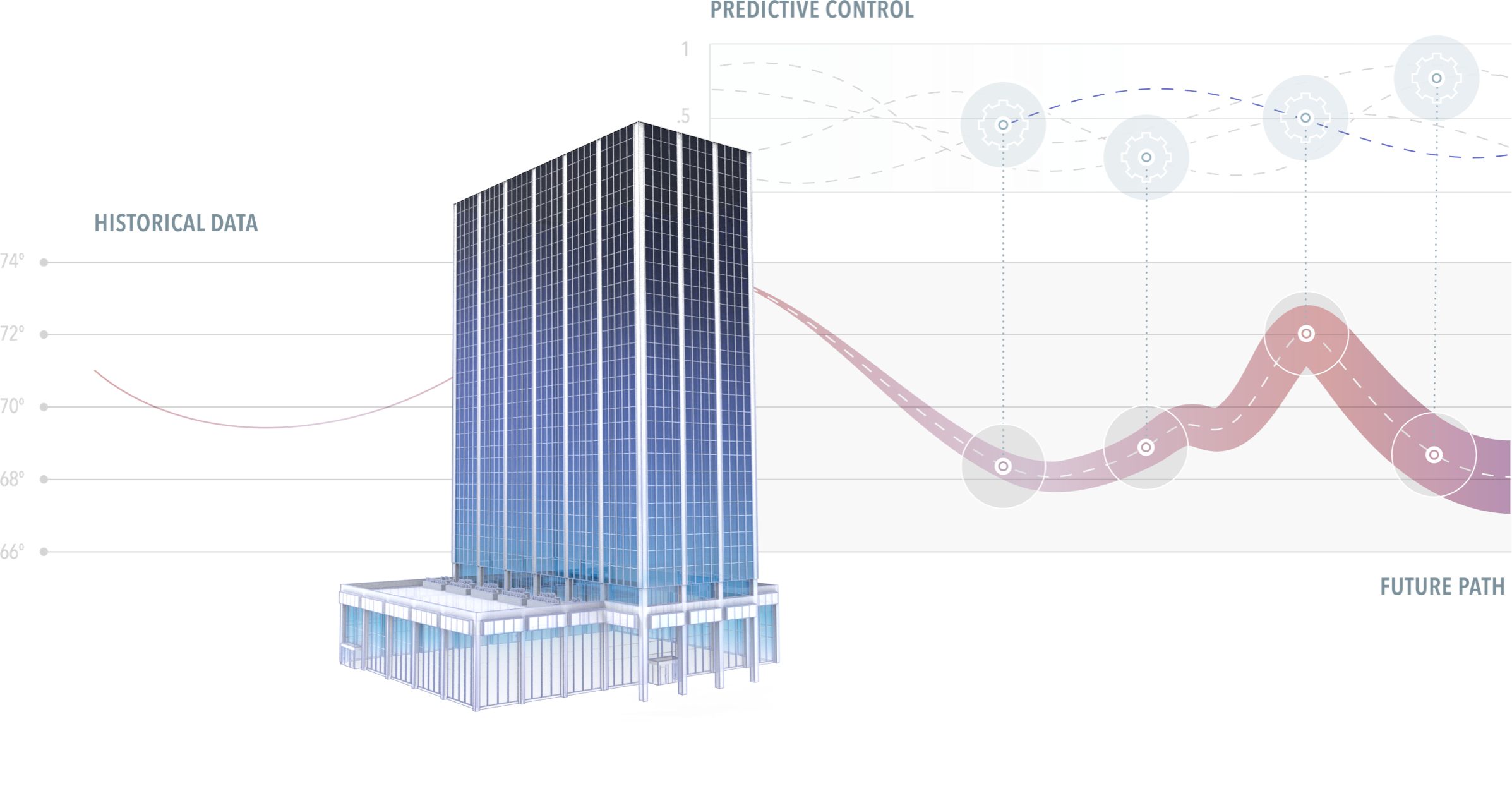
Quantum Explorer is an interpretive tool that documents the Quantum Standard Ontology and makes it easy to navigate by providing several ways to explore the building blocks of the standard and how they are interconnected. You can navigate Quantum domains, objects, and relationships in the outline view using the Object and Details browsers or visually on the Ontology Graph Explorer. You can also query the Ontology to find specific properties and metrics you’re interested in.
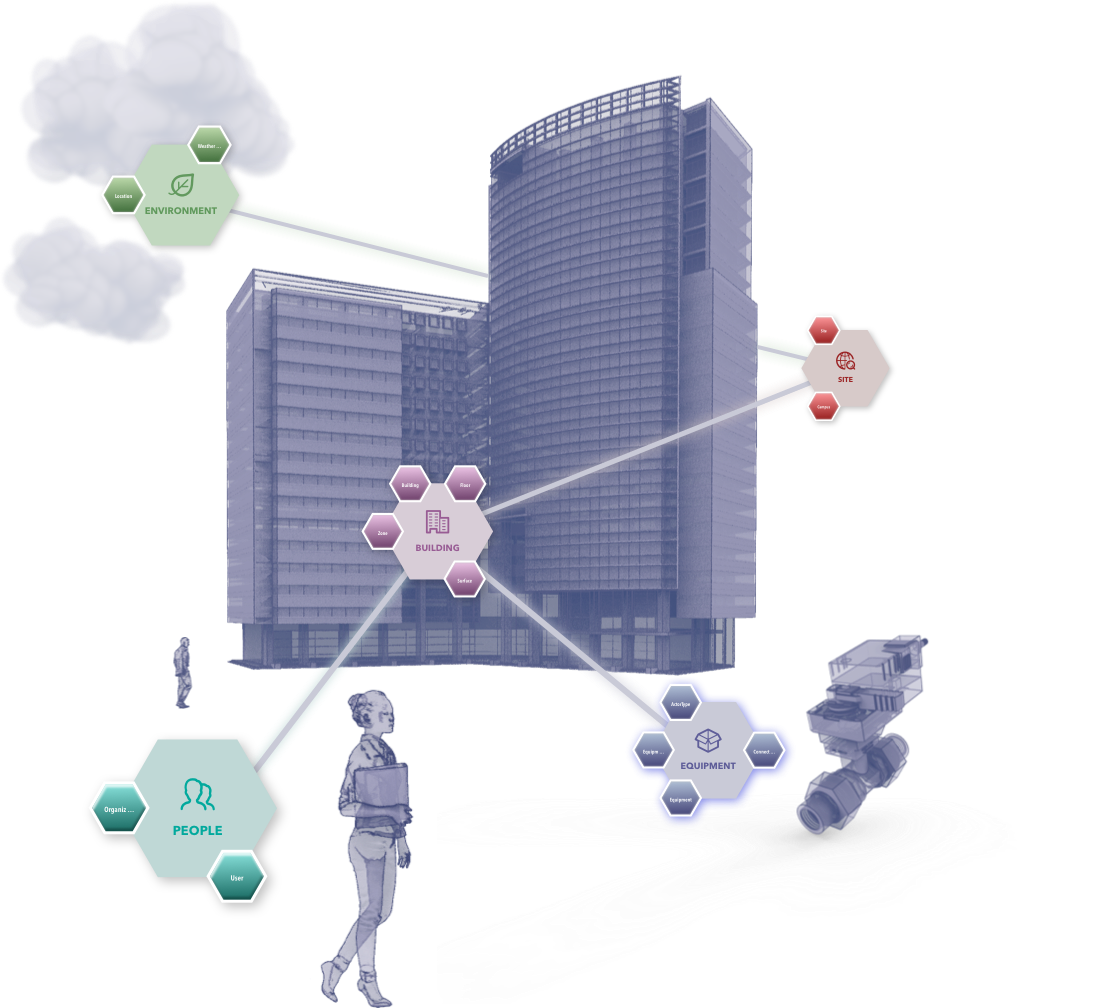
Quantum Ontology.
Real Digital Twins.
Quantum defines the purpose and meaning of objects in a system. The Quantum Ontology provides them with descriptions that answer fundamental questions, such as what they are, why they exist, how they work, and how they interact with each other. Quantum groups these objects logically into domains, which are further described by their attributes and relationships. The Quantum Ontology includes domains like Site, Building, and Environment that enable whole-building simulation, System and Equipment for modeling equipment, and Property and Time Series for control modeling.

Geometry
A general category for inanimate object types.

Binding
A category of object types that can be generically associated with other objects for the purposes of conveying metadata. These objects can be thought of similarly to MIME types.

Building
Object types associated with the physical construction and topology of a Building including, floors, zones, surfaces, layers, and more.

Environment
A category of object types for capturing the geographical and environmental conditions buildings exist and operate in.

Equipment
A category of object types that describe the physical composition, the role, and the interconnectedness of equipment. Equipment in Quantum are composed of components and connection nodes.

Event
A category of objects used to describe the meaning of an event, its associated triggers, and strategy for resolution. Alerting based on observed data patterns and notifications for time-sensitive error resolution is also captured in this domain.

Time Series
A category of time series objects that enable systems to understand and learn from the past and predict what the future may hold. Historical or predicted values of properties and events are captured in this domain.

People
A category describing users and their relationships to organizations, sites, and other object types in Quantum.

Property
A category of objects that convey generic information associated with many different types of objects and can be computed or have a literal value.

Quanta
A grouping of object types defined as packets of substance, or the media, exchanged between and operated on by components. They are often thought of as the things that capture state information.

Geometry
A category of high-level geographic object types that situates a building in the world.

System
A category of object types used to describe an interconnected group of equipment with subsystems, loops, and operational constraints.
Quantum Explorer.
Ontology Revealed.
With Quantum Explorer you navigate and learn about the Quantum Standard Ontology as a modeling structure as opposed to modeling objects. Quantum Explorer reveals the building blocks of the ontology; the domains, the objects that make up a domain, and how they are described and relate.
Using the Object and Details browsers you can view the Ontology outline. Select a domain on the left sidebar (the Object browser) and its drawer of objects opens. Click an object and the Details browser opens to reveal its attributes, relationships, and the definition of the selection. As you navigate the Ontology with the Domain and Details browsers, the Ontology Graph Explorer shows your selections visually.
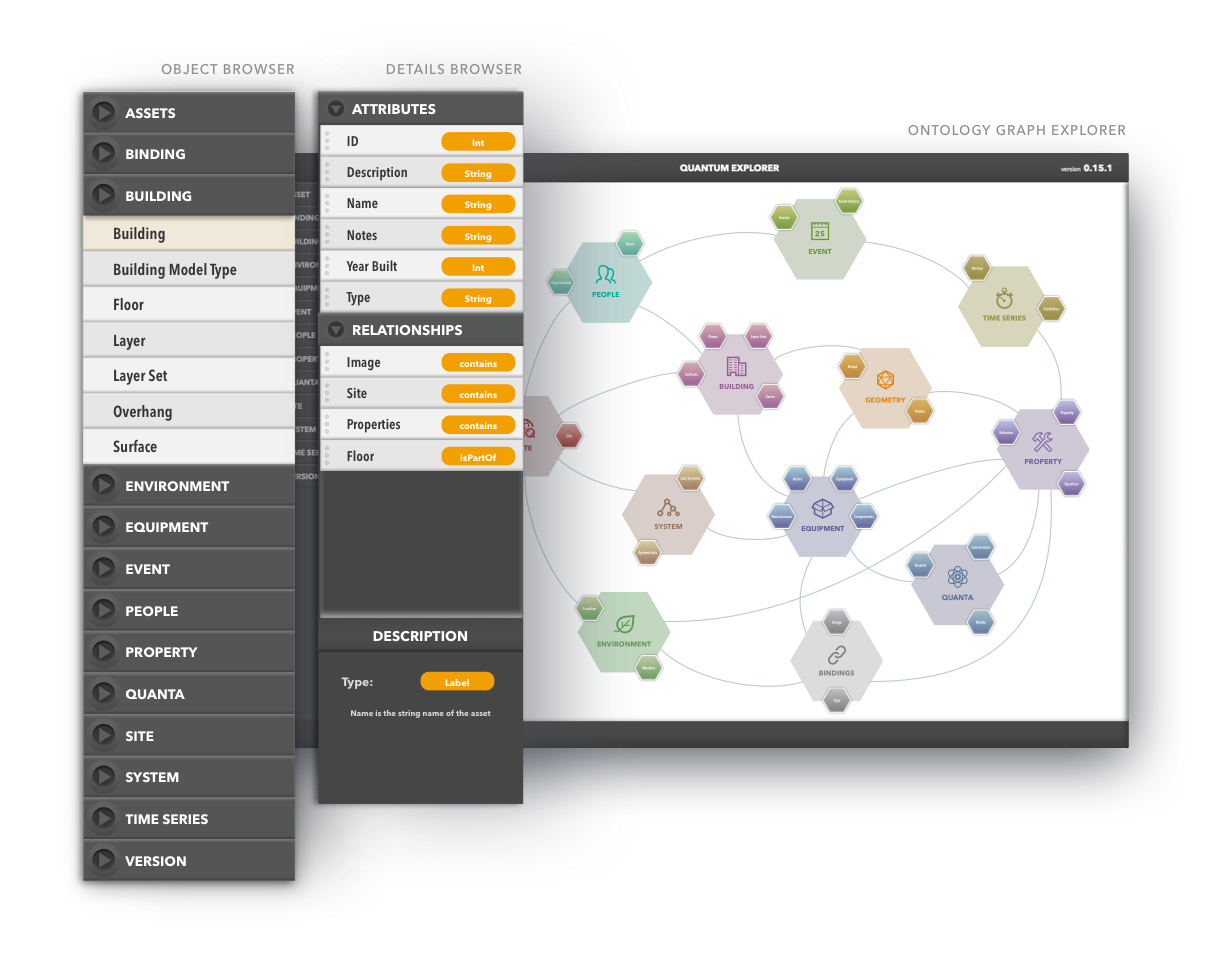
You can also navigate Quantum using the Ontology Graph Explorer in the right window. Domains are represented by large hexagons and objects by the small ones. In the default view, where all domains are visible, only the primary objects are displayed. Select a domain to see the primary relationships (represented by heavier connection lines between domains); select an object to see its attributes and relationships in the Details browser.
Double-click a domain to view a close-up showing all objects and their relationship details. When you navigate domains and objects on the Ontology Graph, your selections are matched on the Domain and Details browsers.
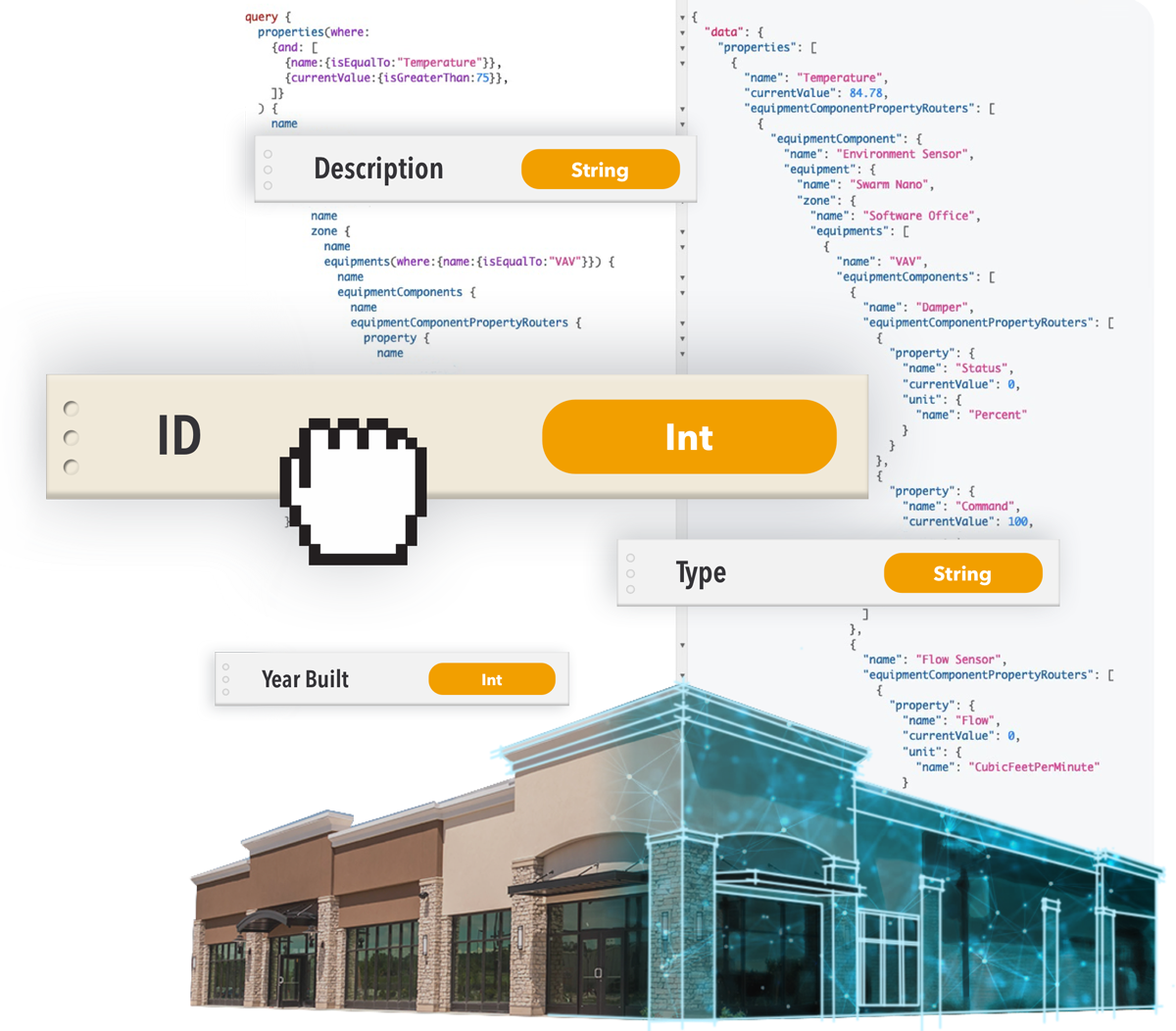
Query the Ontology.
Unlock It With the API.
With Quantum Explorer, not only can you navigate the details and the structure of the Ontology in various ways, you can also translate that navigation into textual queries using the Query Builder.
The Quantum API is the first high-level, developer-friendly API for buildings. It enables plug-and-play services for analytics, analysis, energy monitoring, building management, and more. Built on top of GraphQL, the Quantum API enables developers to design automation solutions and services grounded in a building's real physics, without having to become an ontology expert.
Using this API entails creating and executing textual queries, which is where Query Builder and the built-in GraphiQL interface comes in. This interactive tool is a great way to familiarize yourself with the syntax associated with the Quantum API. It allows you to connect the dots between the concepts that are diagrammed out in Quantum Explorer and the specifics of how you interact with them through the Quantum API.
Get Started.
Quantum Explorer Videos.
You can start using Quantum Explorer from this page by clicking the button below. Before you do, take a quick tour through the elements and the workflow of Quantum Explorer by watching the Quantum Explorer Overview video. To learn about querying with Query Builder and GraphiQL in Quantum Explorer, watch the Querying Quantum Walkthrough video.
For more on how to use Quantum Explorer, see the documentation page.